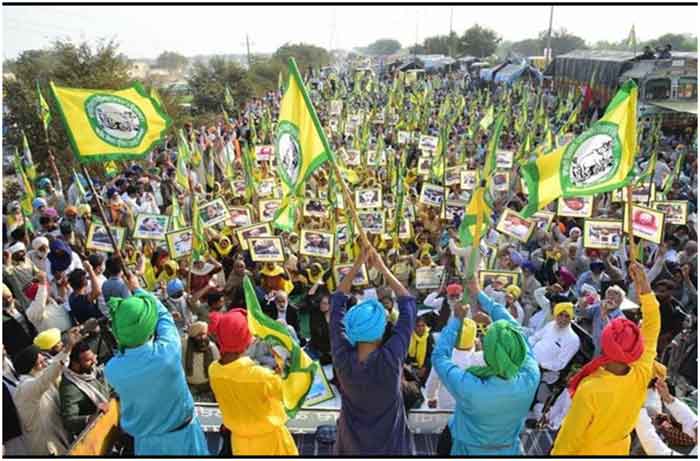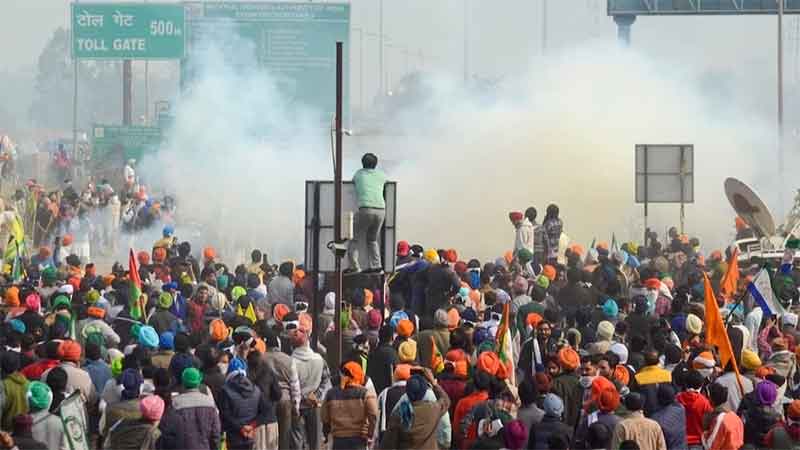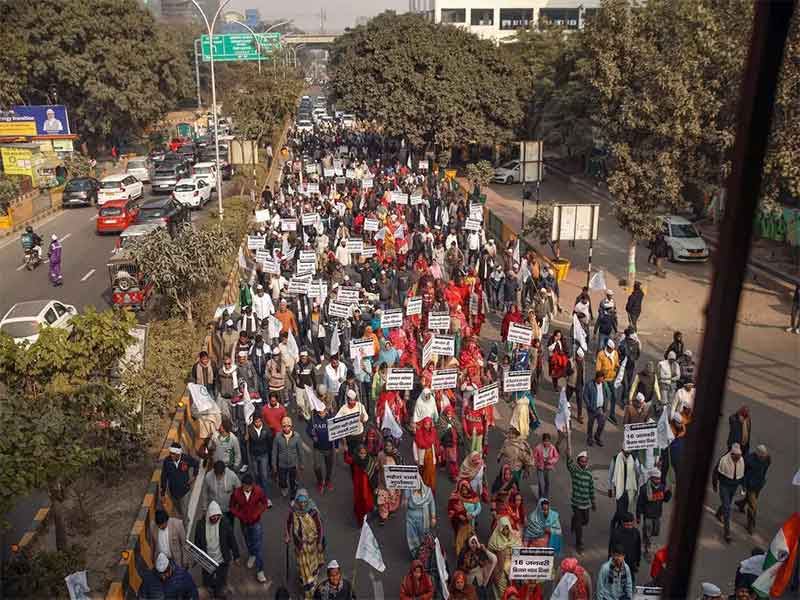
US president Trump dismissed Christopher Krebs, director of the US Cybersecurity and Infrastructure Security Agency. Reason? Krebs had disputed Trump’s contention that the presidential election had fraudulent ballots and software glitches that changed millions of votes. Krebs spoke his “truth”, which did not match president Trump’s “truth”. Krebs paid the price by losing his job.
In our country in recent years, several Krebs-equivalents have been dismissed for similar reasons. But that is about individuals whose “truths” differed from the “truths” of the powers-that-be.
Today we observe millions of farmers and workers who are speaking their “truth” about the three new Farm Laws. They cogently argue that the new laws will lead to their losing livelihoods and lands, but government continues to defend its indefensible “truth”, that these laws are in the best interest of the farmers themselves. This is the reason for the current deadlock. Unlike our Krebs-equivalents, government cannot summarily dismiss millions of farmers and workers.
The on-going farmers’ protests against the new Farm Laws and the not-so-visible workers’ protest against the new Labour Laws, are peaceful and principled.
The farmers’ and workers’ protests are undeniably deeply political just as much as they are socio-economic, since they are in defence of their lives, livelihoods and lands. Opposition political parties are undoubtedly trying to make use of the strength, size and spread of these protests for their own ends, just as the present ruling party did when it was in opposition in similar circumstances.
Wealthy farmers or political parties joining the small farmers’ protests surely have their own agendas, but this does not in any manner detract from the validity of the fundamental reasons for the protests.
The farmers-workers protests are not influenced by political-party interests and agendas, whatever government may choose to believe or state.
While speaking of farmers and workers, the generations-long pent-up distress and pain of the oppressed Dalit communities and more recently of religious minorities, needs to be recalled.
It also needs to be recalled that Armed Forces soldiers retire at ages 38 to 42, and invariably return to their roots in the farmer-worker communities. Especially in Punjab, Haryana, Rajasthan and UP, their numbers are significant, and many of them are present among the protestors. The manner in which government has used force in dealing with peaceful protestors has not escaped the attention of serving soldiers, who will also in due course return to their roots.
The unfolding situation brings to mind Howard Zinn’s writing [Howard Zinn; “A People’s History of the United States” ; Harper, 2003] about the workers movements during the first six decades of the 20th Century in USA, and how the US Government dealt with them.
It is relevant to quote four excerptsfrom Zinn [in italics] to point at the actions, reactions and motivations of the US government of those times being so similar in many respects, to those of our own government.
#1. [“The 1930s & 1940s showed … the dilemma of working people in USA. The system responded to workers’ rebellions by finding new forms of control – internal control by their own organizations as well as outside control by law and force.“] … Our government used police force – tear-gas, water-cannon, large/heavy barriers, razor-wire, dug ditches – in attempts to stop the farmers coverging on Delhi. But the farmers succeeded in peacefully reaching the “gates” of Delhi at Singhu Border, Tikri Border, etc.. Our government is attempting to break farmers’ unity by calling in farmers who agree with the new Farm Laws.
#2. [“When the New Deal was over … the rich still controlled the nation’s wealth, as well as its laws, courts, police, newspapers, churches, colleges. …. the same system that had brought depression and crisis – the system of waste, of inequality, of concern for profit over human need – remained.“] … The BJP trounced the Congress and formed government at the Centre on the basis of a “new deal” of development in its election manifesto. But it was little different from the Congress, in that big-business remains in control and a handful of billionaires own around 40% of national wealth. This has not escaped the attention of the protesting farmers, who openly condemn top business honchos.
#3. [“It (WW2) was a war waged by a government whose chief beneficiary – despite volumes of reforms – was a wealthy elite. The alliance between big business and the government went back to … the Revolutionary War. By WW2 that partnership had developed and intensified…. A few voices continued to insist that the real war was inside each nation.“] … The nexus between big business and government which was clear even in UPA times, was consolidated by the NDA governments starting 2014. The voices (including journalists and social workers) which spoke out were silenced by various means including imprisonment. The farmers have expressed their support to some of these imprisoned persons.
#4. [“The black revolt of the 1950s and 1960s – North and South – came as a surprise. But perhaps it should not have. The memory of oppressed people is one thing that cannot be taken away, and for such people, with such memories, revolt is always an inch below the surface. For blacks in the US, there was the memory of slavery, and after that of segregation, lynching, humiliation. And it was not just a memory but a living presence – part of the daily lives of blacks in generation after generation.“] … Dalit communities (“untouchables” until outlawed by our Constitution) have suffered segregation, lynching and humiliation for centuries at the hands of “upper castes” which, as for blacks at the hands of whites in USA, continues as a living presence to this day. There have been outbursts of Dalit anger, such as following the 2006 Khairlanji (Maharashtra) massacre and the 2017 Una (Gujarat) floggings, but untouchability and humiliation of Dalits persists. The 2018 Bhima-Koregaon violence against Dalits celebrating the 200th anniversary of the Battle of Koregaon shows continuing Dalit oppression. This is relevant because Dalits are a significant proportion of farmers and workers.
However, the comparison ends there. The on-going farmer-worker protests in India and the workers protests in USA are quite different becauseof the social-cultural-economic-political situations and the times. While the workers movement did not succeed in USA, the on-going unprecedented farmers-workers protest movement, which has grown to its current scale and spread, has already succeeded as definitive expression of the will of We the People. Today, India’s farmers-workers are peacefully yet strongly speaking Truth to Power.
Satyameva Jayate! Jai Hind!
~~~~~~~~~~~~~~~~~~~~
QUOTES from Howard Zinn’s “A People’s History of the United States”; Harper, 2003.
The 1930s & 1940s showed … the dilemma of working people in USA. The system responded to workers’ rebellions by finding new forms of control – internal control by their own organizations as well as outside control by law and force. But along with the new controls came new concessions. These concessions didn’t solve basic problems; for many people they solved nothing. But they helped enough people to create an atmosphere of progress and improvement, to restore some faith in the system.
When the New Deal was over … the rich still controlled the nation’s wealth, as well as its laws, courts, police, newspapers, churches, colleges. …. the same system that had brought depression and crisis – the system of waste, of inequality, of concern for profit over human need – remained.
It [WW2] was a war waged by a government whose chief beneficiary – despite volumes of reforms – was a wealthy elite. The alliance between big business and the government went back to … the Revolutionary War. By WW2 that partnership had developed and intensified…. A few voices continued to insist that the real war was inside each nation.
The black revolt of the 1950s and 1960s – North and South – came as a surprise. But perhaps it should not have. The memory of oppressed people is one thing that cannot be taken away, and for such people, with such memories, revolt is always an inch below the surface. For blacks in the US, there was the memory of slavery, and after that of segregation, lynching, humiliation. And it was not just a memory but a living presence – part of the daily lives of blacks in generation after generation.
Major General S.G.Vombatkere (Retd) is a cross-discipline, systems-thinking sceptic.
SIGN UP FOR COUNTERCURRENTS DAILY NEWSLETTER













































